Happy Moulid El-Nabi to all Muslims around the globe
Tonight, nearly one billion and a half Muslims around the world celebrate the birthday anniversary of Prophet Muhammad (PBUH). This holiday is commonly known in Arabic as "El-Moulid El-Nabawy" and in Egyptian Arabic colloquial as "Moulid El-Nabi."
El-Moulid El-Nabawy is observed on the 12th of Rabi Al-Awwal in the Islamic calendar, which falls on September 27th this year. In Egypt, we will not have Wednesday off because the government declared Thursday a day off since 2020 whenever a public holiday falls on a weekday, exempting Eid Al-Fitr, Eid Al-Adha, and Coptic Christmas.
 |
| Moulid Sweet's empty cartoon boxes |
To celebrate Moulid El-Nabi, I visited a makeshift market in El-Sayeda Zeinab, a popular neighbourhood in Cairo. I was originally planning to visit Bab El-Bahr, the centre point of making El-Moulid sweets, to see how the centuries-old authentic Egyptian sweets are still handmade today. However, due to work pressure, I found El-Sayeda Zeinab's market to be a quick refuge, and I am glad that I did.
I found a whole stand dedicated to the original Egyptian sugary Arouset and Housan, also known as sugary dollie and horse in Arabic.
 |
| The Moulid dollies and horses stand at El-Sayeda Zeinab |
It is widely accepted among historians that the origins of the current Moulid sweets in Egypt, especially Arouset El-Moulid (the "dollie") and Housan El-Moulid (the "horse"), can be traced back to the Fatimid era.
According to legend, in commemoration of the Prophet Mohamed's (PBUH) birthday, the Fatimid Sultan would lead a procession through the streets atop his horse, accompanied by one of his wives dressed in a white gown and adorned with an intricately decorated crown.
 |
| The Moulid Housan or Horse with all its decoration |
While some claim that this Sultan was none other than El-Hakim bi-Amr Allah, I remain sceptical due to the controversial nature of his life. Another version of the legend suggests that El-Hakim ordered weddings to be exclusively held on Moulid night, giving rise to Arouset (which can also be translated as "bride") and the horse, symbolizing the groom.
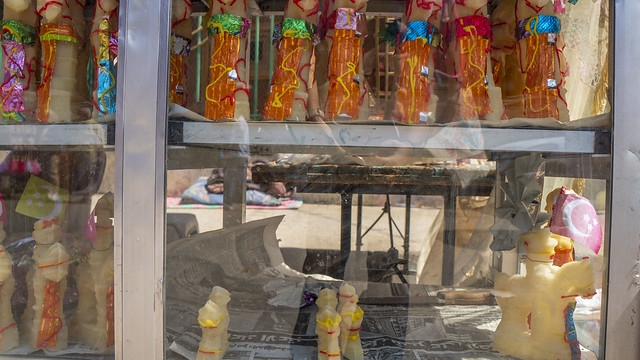 |
| Tiny horses and big dollies |
Surprisingly, I find this version of the legend plausible, given the historical accounts of El-Hakim.
Recently, a new theory surfaced about the origin of the dollies suggesting that it went beyond the Fatimids to ancient Egypt itself. The theory suggests Egyptians in the Fatimid era knew the recipe and how to do it using wooden moulds.
Stronger evidence that supports this theory is that black kohl (eyeliner) that outlines the dollie’s eyes and brows and the excess pink blush on her cheeks are typical ancient Egyptian trends.
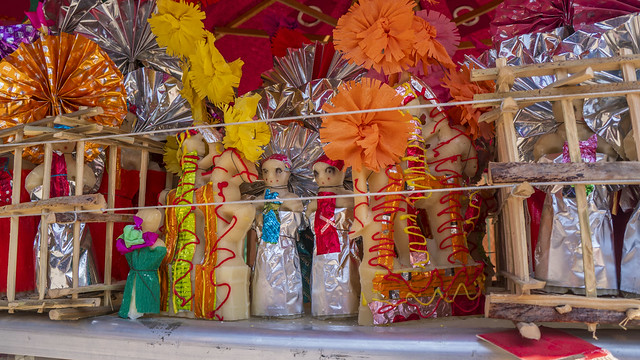 |
| The Moulid dollie and horses with their full colorful decorations |
Personally, I believe this theory too. I remember that I saw some statuettes from the Ancient Egyptian Greco-Roman with a resemblance to the Horse model.
If the make-up of the dollie or the bride went back to ancient Egypt, the attire of the bride went back to the Fatimid era as well as the Mamluk era.
According to the “Moulid Doll” book by Abdel Ghany El-Nabawy, the moulid doll’s attire reflects the costumes of women during the Fatimid era while its tight vest came from the Mamluk era.
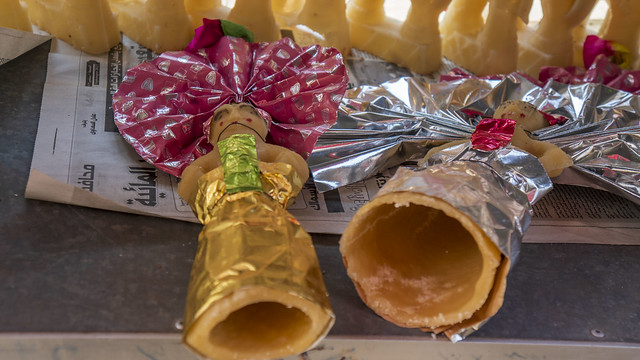 |
| The surgery Arouset El-Moulid or El-Moulid is made of sugar mainly |
When it comes to the depiction of a knight riding a horse, the attire has changed through different ages, from the Fatimid era to the Mamluk era, the Modern period, the Egyptian Kingdom era, and the Egyptian Public era.
The key difference is the headpiece. In the past, it was the turban, both in the Fatimid and Mamluk eras. This continued until the 19th century, when Egypt became an independent state under the rule of Muhammad Ali and the Egyptian modern army was born.
The knight's headpiece then changed to the fez, also known in Egypt as the tarboosh. This was worn during the Khedivate of Egypt (1867-1881), which featured the red flag with a white crescent and three five-pointed white stars.
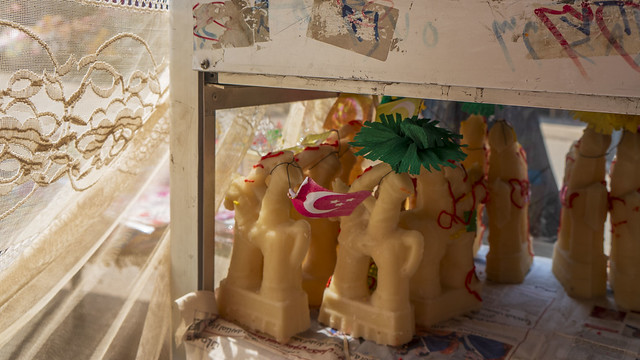 |
| The red flag and the military cap are there if you pay attention to the horse's details |
The red flag changed to the green flag of the Egyptian Kingdom and early years of the Egyptian Republic (1923-1958). This flag was made of green with a white crescent containing three five-pointed white stars.
During this time, the tarboosh changed to a military peaked cap, as seen in the small details of many depictions of knights from this era.
As you can see even the Moulid sweets’ famous Dollie and Horse have a multi-layered history in Egypt. They should be recorded as intangible Egyptian/World Heritage by UNESCO.
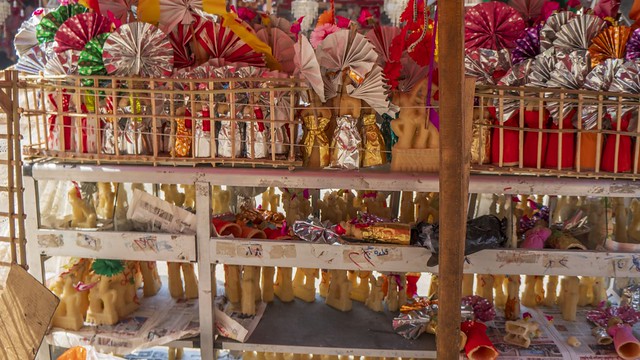 |
| Moulid dollies and horses of every size and price too |
We got as small and cheap as LE 10 X-small size till the LE 150 X-Large.
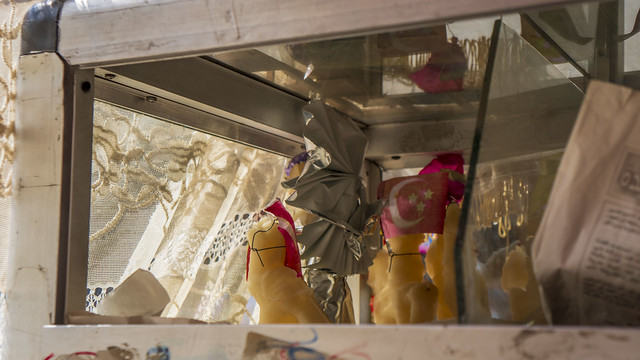 |
| The Moulid Sugary dollies and horses are handmade to this day |
The sugary dollie and horse were believed to be dying against the plastic dollies but surprisingly they are still standing against all odds.
What I saw is that there is still a demand for their sugary dollies and horses. Aside from the tradition, some families may regard them as a cheap source of sugar.
 |
| The Moulid Sugary dollies and horses |
It is worth noting that this year's Moulid comes amidst a huge sugar crisis, unrelated to the usual sugar shortage caused by the Moulid. The crisis started in the summer and continues up to now.
On Wednesday, Egypt's Supply Ministry said it will import 200,000 tonnes of raw sugar, set to arrive in the "coming period."
Plastic dolls still have their market and fans among the children, but I think their prices now will make them unaffordable for many especially if we are speaking about big families.
The prices of those dolls are in the range of LE 100 to LE 350 for the big ones
Economic Crisis Impact on the Egyptian Moulid Market
This year, the economic crisis has had a significant impact on the market, with less demand and gloomy vendors' faces.
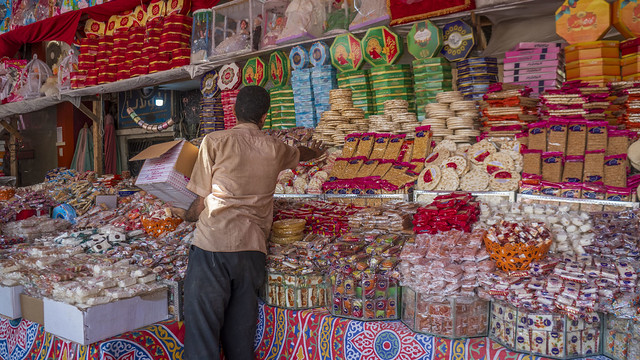 |
| Putting the Moulid sweets on the shelves |
However, some vendors are still smiling at the camera.
Despite being considered one of the main places in Cairo to get cheaper Moulid sweets, the El-Sayeda Zeinab market has seen a decrease in supply and demand compared to last year. Nevertheless, you can still find every type of sweets you can imagine there, including the online-hated "Humusaya" (yes, we have a special hummus sweet).
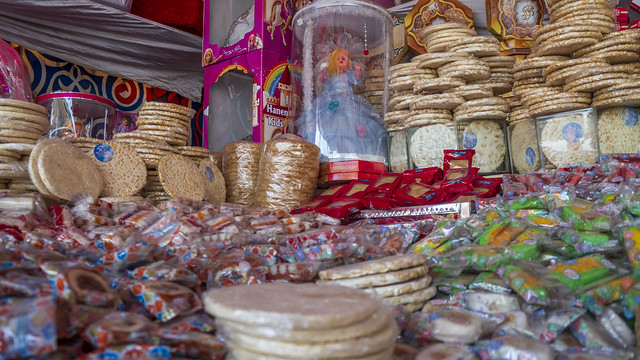 |
| Plastic dollies with Moulid sweets including the missing Humusya |
For some reason, there is a "Humusaya" shortage this year, as many people, including yours truly, have been unable to find it.
I found out as El-Sayeda Zeinab.
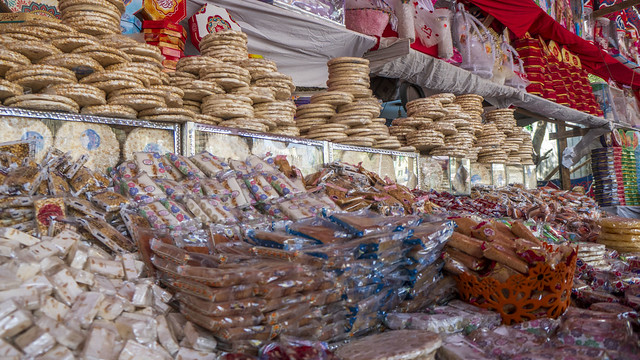 |
| El-Moulid sweets of every type you can imagine at Cairo's El-Sayeda Zeinab |
The prices of Moulid sweets range from LE 70 to LE 200 per kilogram. However, some people tend to forget that next week marks the start of the Egyptian National educational system school year nationwide.
Schools and their expenses are already a huge burden for all classes in Egypt.
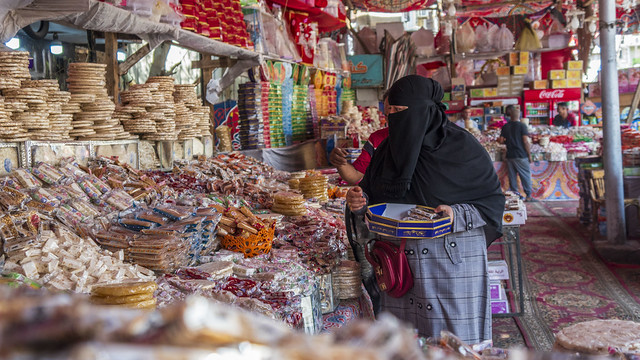 |
| A customer buying El-Moulid sweets at Cairo's El-Sayeda Zeinab |
According to the Central Agency for Public Mobilization and Statistics (CAPMAS), monthly headline urban CPI inflation was recorded at 1.6 % in August 2023, compared to 0.9 % in the same month of the previous year and 1.9 % in July 2023.
Accordingly, the annual headline inflation rate was recorded at 37.4 % in August 2023, compared to 36.5 % in July 2023.
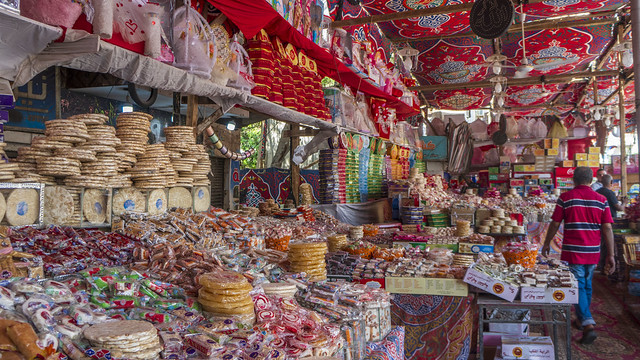 |
| El-Moulid sweets at Cairo's El-Sayeda Zeinab waiting for customers |
Monthly core CPI inflation, computed by the Central Bank of Egypt (CBE), recorded 0.3% in August 2023, compared to 0.6 % in the same month of the previous year and 1.3 % in July 2023. Accordingly, the annual core inflation rate was recorded at 40.4 % in August 2023, compared to 40.7 % in July 2023.
Either way, Happy and blessed Moulid Nabawy to all the people around the globe.
Wait for the rest of the photos and their video inshallah.
Photographs were taken by Sony Alpha a6500 with an e-mount lens kit 18-55mm.

No comments:
Post a Comment
Thank You for your comment
Please keep it civilized here, racist and hateful comments are not accepted
The Comments in this blog with exclusion of the blog's owner does not represent the views of the blog's owner.